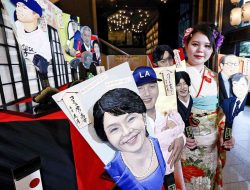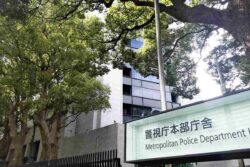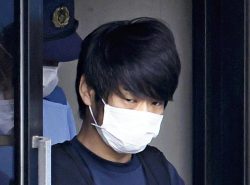Suga-style politics 2 / As Suga tidies house for consumers, sweeping vision remains to be seen

Prime Minister Yoshihide Suga delivers an inaugural speech at the Diet on Oct. 26, 2020.
10:22 JST, March 27, 2021
This is the second installment in a series reviewing the first six months of Prime Minister Yoshihide Suga’s administration.
Soon after moving into the Prime Minister’s Office, Suga enacted one of his first reforms: he wanted a smaller conference table.
The table inherited from the office’s previous occupant, Shinzo Abe, was much too big, he said. He felt distant from the bureaucrats seated around the table, too far away to pass papers and printouts hand to hand.
Those in the prime minister’s periphery recognized the downsizing as being in-character for Suga, a practical, business-oriented man who wants to use time as efficiently as possible.
Having pledged to form a “Cabinet that works for the people,” Suga certainly wasted no time in tackling a series of policy challenges immediately after assuming the premiership. He has sought to lower mobile phone rates, promote digitization, and cover fertility treatment under national health insurance in an opening gambit that has prioritized the “early, small success” quick-hit strategy espoused by Toyo University Prof. Heizo Takenaka, an influential member of Suga’s brain trust.
These “signature” policies have begun to bear fruit. The three major mobile phone carriers have announced a flurry of new, lower-cost phone plans that will be available from late March. A package of bills, including the launch of a digital agency in September this year, has been debated at the Diet. Progress has been made on a framework for applying health insurance to fertility treatment as early as April 2022.
Ever since his days as a young lawmaker, Suga has focused on individual policies that have a direct bearing on the daily lives of people, stewarding the sort of change that is both readily felt and widely supported by the public. The “furusato nozei” system, in which taxpayers can write off donations to local municipalities of their choice, is one archetypal example of this “Suga-style democracy,” as it has come to be known within the halls of government and the ruling parties.
However, now that Suga has ascended to the prime minister’s seat, murmurs of discontent have begun to reverberate in those same halls, as even some members of the prime minister’s own Liberal Democratic Party have seemed less than wholly satisfied with Suga’s style.
At noon on Feb. 23, a national holiday commemorating the Emperor’s birthday, a veteran LDP lawmaker invited LDP Secretary General Toshihiro Nikai to the lawmaker’s room in the dormitory for Diet members in Tokyo’s Akasaka district. During the meeting, they discussed several topics, including Suga’s handling of his administration.
The veteran lawmaker, who supported Suga in the party’s leadership election last year, voiced his discontents with the prime minister: “He has no bigger, overarching vision. I feel he is running his administration as an extension of when he was the chief cabinet secretary.” In response to the complaints, Nikai telephoned Suga, who also lives in the same dormitory, asking him to come to the room. But Suga could not make it.
Own vision needed
Many past prime ministers left their ideological marks with bold, symbolic concepts, such as Hayato Ikeda’s income doubling plan, Kakuei Tanaka’s proposal to “remodel” the Japanese archipelago, and Yasuhiro Nakasone’s call for a total reassessment of postwar politics.
Former Prime Minister Abe advocated a “clean break with the postwar regime” in his first Cabinet but had filed the phrase away by the time of his second Cabinet, when he instead forwarded his “Abenomics” economic package.
Abe stressed that it would take a strong administration to amend the constitution. In order to create a strong administration, it would be necessary to improve the economy, and Abenomics was the first priority to that end. As an Abe aide said, “Constitutional revision awaited on the other side of Abenomics.”
As one LDP lawmaker stated, “I have no idea what Suga is aiming for, or whether he even has a philosophy of his own, in the first place.”
Another lawmaker who held Cabinet posts in both the Abe and Suga administrations suggested, “A mid- to long-term ‘Suga-style’ vision is needed.”
At the end of 2011, Suga chaired the LDP’s Party Organization and Campaign Headquarters, a role which involved putting together the party’s campaign policy. Sadakazu Tanigaki, who was the then LDP president and a former finance minister, asserted that although the LDP was an opposition party at the time, it still needed to use its campaign policy to explicitly address the necessity of the consumption tax issue.
As a result, the draft campaign policy included a clear statement that it was necessary to promote drastic reform of the tax system, including consumption tax.
Policies pleasing everyone
Suga pushed back against Tanigaki, arguing that promoting the consumption tax too fervently would close the LDP’s path back to power.
Tanigaki yielded and the description concerning the consumption tax was toned down in the final draft.
A veteran lawmaker familiar with the climate at the time recalled feeling that “Suga positioned policies as a thing of secondary importance.”
Not being bound by philosophy can also be a strong suit. A senior official at the an economy-related government agency remained optimistic: “The fact that he’s not fixated on policy or principle makes him all the more free to dismantle the top-down silo bureaucracy and promote regulatory reform.”
“Improving the quality of life is more important to the public than lofty ideals,” said another young lawmaker, voicing his approval of the Suga style.
As Suga tells his circle, “To achieve what the people will take for granted — that’s my vision.”
However, there’s a very fine line to tread between public-pleasing policies and populism.
Where are all these “early, quick successes” meant to lead? The end game and defining Suga signature remain to be seen.
Personal interests as driving force
In 2006, when he first became a Cabinet-member as an internal affairs and communications minister, Suga devoted his efforts to the creation of the furusato nozei system, his own roots in Akita Prefecture motivating an uncommonly strong attachment to Japan’s hinterlands.
When he became chief cabinet secretary in 2012, Suga further expanded the furusato nozei system and made efforts to increase the number of inbound foreign tourists and foreign workers into Japan. In order to facilitate headway on these issues, he set up a conference — with himself as chairperson — at the Prime Minister’s Office, promoting policies with the participation of each ministry and agency.
Suga has been an advocate of a diverse range of other issues, including anti-flood measures using irrigation dams, and the promotion of game meat.
According to those who know the prime minister closely, it is his personal interests which are his driving force.
"Politics" POPULAR ARTICLE
-

Japan to Charge Foreigners More for Residence Permits, Looking to Align with Western Countries
-
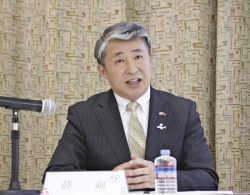
China Would Cut Off Takaichi’s ‘Filthy Head’ in Taiwan Crisis, Diplomat Allegedly Says in Online Post
-
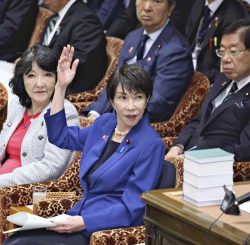
If China Were to Impose Blockade on Taiwan, Existential Crisis Could Be Triggered, Japan’s Prime Minister Takaichi Says
-

Japan to Tighten Screening of Foreigners’ Residential Status by Providing Information of Nonpayment of Taxes
-

Takaichi Cabinet Approval Holds at 72% as Voters Back Aggressive Fiscal Stimulus, Child Benefits
JN ACCESS RANKING
-

Govt Plans to Urge Municipalities to Help Residents Cope with Rising Prices
-

Japan Resumes Scallop Exports to China
-

Japan Prime Minister Takaichi Vows to Have Country Exit Deflation, Closely Monitor Economic Indicators
-

Japan to Charge Foreigners More for Residence Permits, Looking to Align with Western Countries
-

JR East Suica’s Penguin to Retire at End of FY2026; Baton to be Passed to New Character






